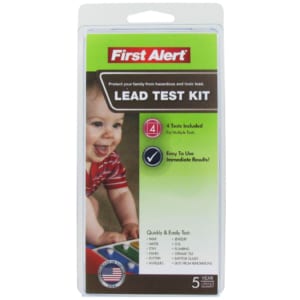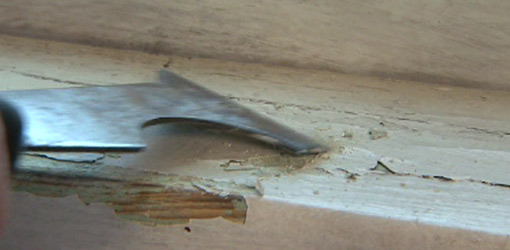Dangers of Lead Paint in Your Home
Before the dangers of lead were known, it was a common ingredient in house paint, where it acted as a pigment and increased durability. Though banned for use in paint in the U.S. in 1978, millions of homes, schools, and businesses still have lead based paint on their walls, both inside and out. According to the Environmental Protection Agency, lead paint can be found in:
- 24% of homes built from 1960-1978
- 69% of homes built from 1940-1960
- 87% of homes built before 1940
If the paint is in good condition and has been painted over, it
usually doesn’t pose a problem. But if the paint is peeling or has been disturbed by scraping, sanding, or burning, it can pose significant health risks to people and pets, especially young children.
Symptoms and Health Risks from Lead Poisoning
Lead can enter the bloodstream by ingesting contaminated dust, eating paint chips, or breathing fumes or dust from sanding or torching. Symptoms include:
- Headaches
- Hearing problems
- Muscle and joint pain
- High blood pressure
- Trouble with digestion
- Reproductive problems
- Difficulties in pregnancy
- Loss of memory and concentration
Children, especially those under two years old, are extremely sensitive to lead. In addition to the health problems listed above, children exposed to lead may develop:
- Damage to the brain and nervous system
- Reduction in I.Q. levels
- Learning disorders
- Behavioral problems
- Slowed growth
Testing for Lead
Before attempting renovation on older homes or painting that involves scraping or sanding, you should have the paint in the house tested for lead. Testing can be done:
- In your home by a professional service using X-ray fluorescence ($500)
- By sending paint chips to a laboratory for testing ($50-$100 per sample).
- Using a do-it-yourself test kit ($10-$30).
DIY test kits use one of these two chemicals for testing:
- Sodium sulfide: Work as well all paints except dark colors.

- Rhodizonate: Works well on all paints except red colors.
While DIY test kits have been considered less than reliable in the past, tests conducted in 2008 by Consumer Reports found the following test kits were effective at detecting lead in paint:
- First Alert Premium Lead Test Kit (#LT1) (sodium sulfide)
- SKC LeadCheck (#225-2404) (rhodizonate)
For accurate results, all the layers of paint need to be exposed to testing, especially older ones. Be sure to read and follow the direction carefully, and consider conducting tests using both chemicals on dark or red colored paints.
Living with Lead Paint
If your house contains lead paint but is not peeling, chalking, or chipping, take the follow precautions to keep your family safe:
- Have children tested for lead.
- Keep floors and woodwork clean. Use a vacuum with a HEPA and change the bag and filter regularly. Damp mop floors and sponge off woodwork using warm, soapy water, rinsing often.
- Wash children’s hands, toys, bottles, stuffed animals and pacifiers regularly.
- Prevent children from peeling loose paint, eating paint chips, or chewing painted surfaces.

Lead Paint Removal
When taking on a remodeling or painting project in a house that has lead paint, the best course of action is to hire a contractor that is trained and certified in lead removal. You should consider moving out while the renovation is going on or at least have the contractor completely seal off the area under construction from the rest of the house and disconnect any HVAC ductwork that could spread dust throughout the home.
If you plan to attempt the work yourself, follow these guidelines:
- Seal off the area using plastic sheets.
- Disconnect heating/cooling ducts to the area under renovation.
- Remove all furniture, food, and other items from the construction area.
- Cover the floor with tarps or plastic.
- Avoid sanding, torching, grinding, sandblasting, or using a heat gun on surfaces containing lead paint.
- Clean up the construction area often using a HEPA filter vacuum and damp mop.
- Wear a NIOSH certified respirator with a HEPA filter that is made for use with lead.
- Wash hands often, especially before eating.
Further Information
Additional questions can be submitted to the National Lead Informtion Center website or by calling 1-800-424-5323. More information on lead and lead removal can be found at:
- Lead in Paint, Dust, and Soil (EPA)
- Renovate Right (EPA)

